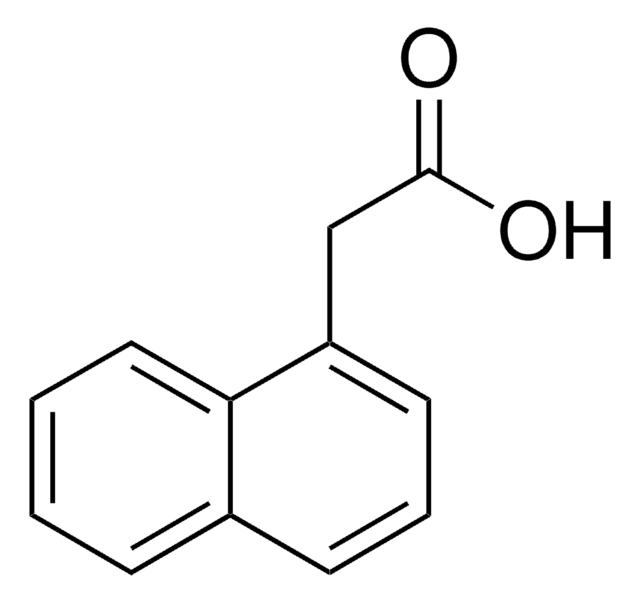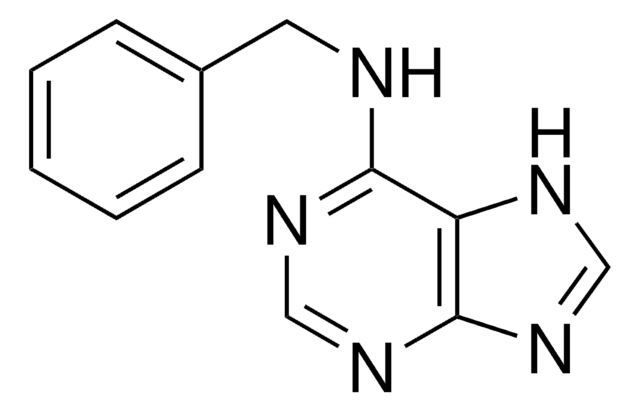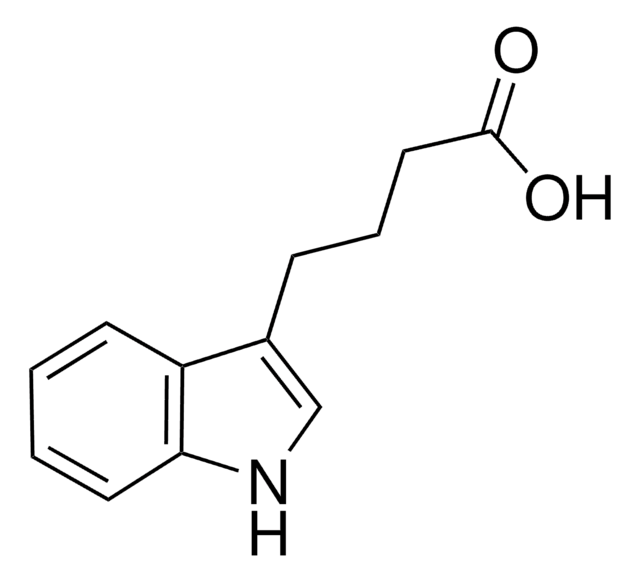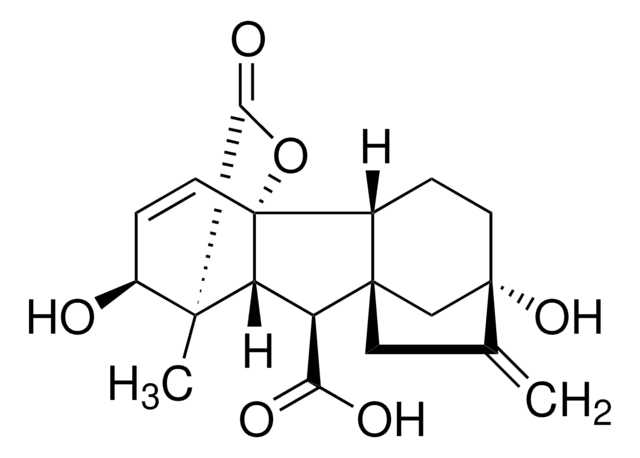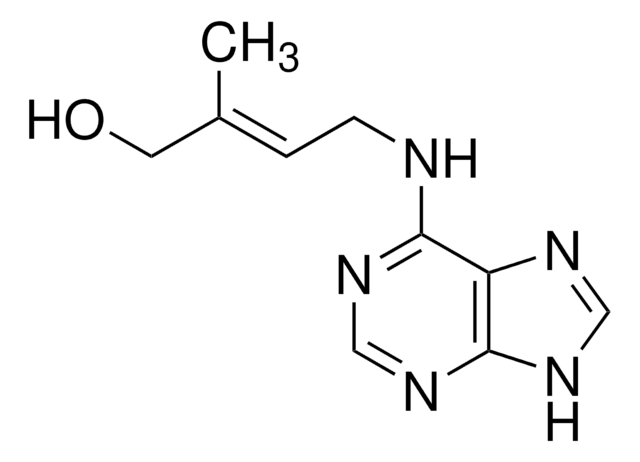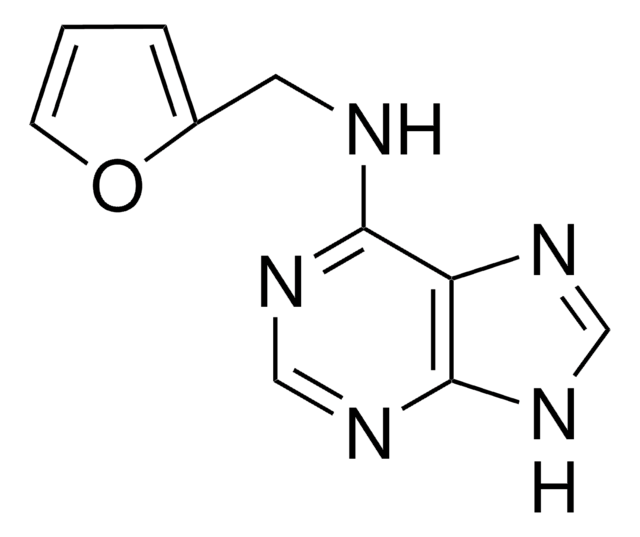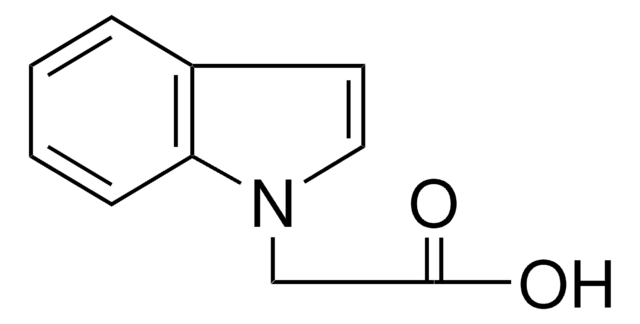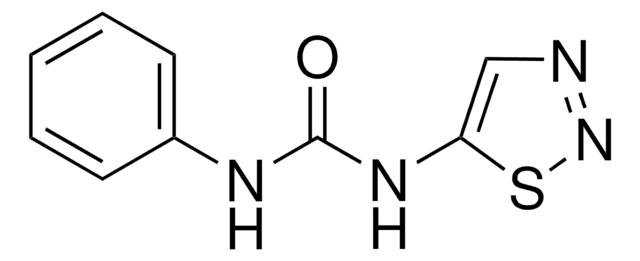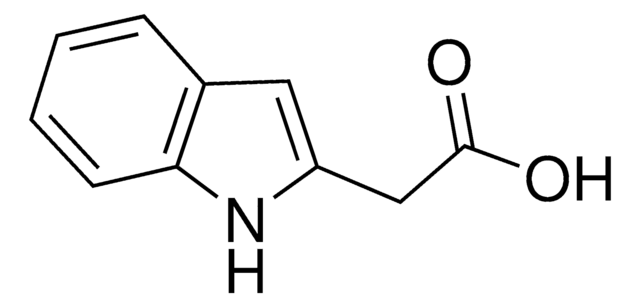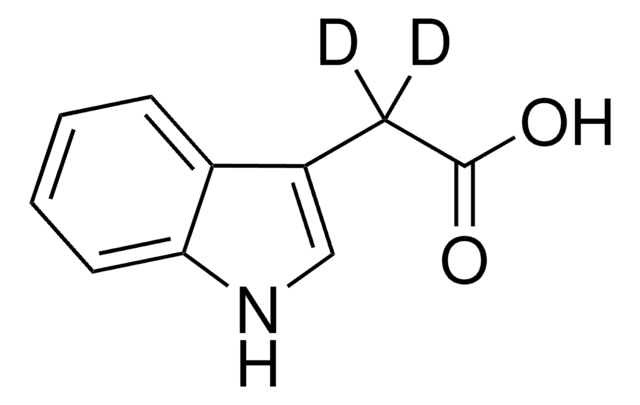I2886
3-Indoleacetic acid
suitable for plant cell culture, crystalline
Synonym(s):
indole acetic acid, Heteroauxin, IAA
Sign Into View Organizational & Contract Pricing
All Photos(4)
About This Item
Empirical Formula (Hill Notation):
C10H9NO2
CAS Number:
Molecular Weight:
175.18
Beilstein:
143358
EC Number:
MDL number:
UNSPSC Code:
10171502
PubChem Substance ID:
NACRES:
NA.72
Recommended Products
Assay
≥98%
Quality Level
form
crystalline
technique(s)
cell culture | plant: suitable
color
white to pink
mp
165-169 °C (lit.)
application(s)
agriculture
storage temp.
−20°C
SMILES string
OC(=O)Cc1c[nH]c2ccccc12
InChI
1S/C10H9NO2/c12-10(13)5-7-6-11-9-4-2-1-3-8(7)9/h1-4,6,11H,5H2,(H,12,13)
InChI key
SEOVTRFCIGRIMH-UHFFFAOYSA-N
Looking for similar products? Visit Product Comparison Guide
Application
3-Indoleacetic acid has been used:
- as standard to quantify hormones
- to modify MS (Murashige and Skoog) media for the initiation of callus
- as an external standard in the analyses of free endogenous growth regulators
Indole-3-acetic acid (IAA) is a natural phytohormone (plant auxin) used as a supplement in media such as Murashige and Skoog media and Gamborg′s B5 media. IAA is a plant signaling molecule involved in plant organogenesis and growth control.
Preparation Note
Storage Class Code
11 - Combustible Solids
WGK
WGK 3
Flash Point(F)
Not applicable
Flash Point(C)
Not applicable
Personal Protective Equipment
dust mask type N95 (US), Eyeshields, Gloves
Choose from one of the most recent versions:
Already Own This Product?
Find documentation for the products that you have recently purchased in the Document Library.
Customers Also Viewed
Auxin, gibberellin, cytokinin and abscisic acid production in some bacteria
Karadeniz A, et al.
World Journal of Microbiology & Biotechnology, 22(10), 1061-1064 (2006)
Free endogenous growth regulators in Pistachio (Pistacia vera L.)
Okay Y, et al.
African Journal of Agricultural Research, 6(5), 1161-1169 (2011)
Callus induction and organogenesis in soybean [Glycine max (L.) Merr.] cv. Pyramid from mature cotyledons and embryos
Joyner EY, et al.
The Open Plant Science Journal, 4(1) (2010)
Xu Liu et al.
PLoS biology, 17(4), e3000219-e3000219 (2019-04-12)
Macroautophagy (hereafter autophagy) is a well-conserved cellular process through which cytoplasmic components are delivered to the vacuole/lysosome for degradation and recycling. Studies have revealed the molecular mechanism of transcriptional regulation of autophagy-related (ATG) genes upon nutrient deprivation. However, little is
Kim L Johnson et al.
PloS one, 10(7), e0131103-e0131103 (2015-07-07)
Mitogen-activated dual-specificity MAPK phosphatases are important negative regulators in the MAPK signalling pathways responsible for many essential processes in plants. In a screen for mutants with reduced organ size we have identified a mutation in the active site of the
Our team of scientists has experience in all areas of research including Life Science, Material Science, Chemical Synthesis, Chromatography, Analytical and many others.
Contact Technical Service
